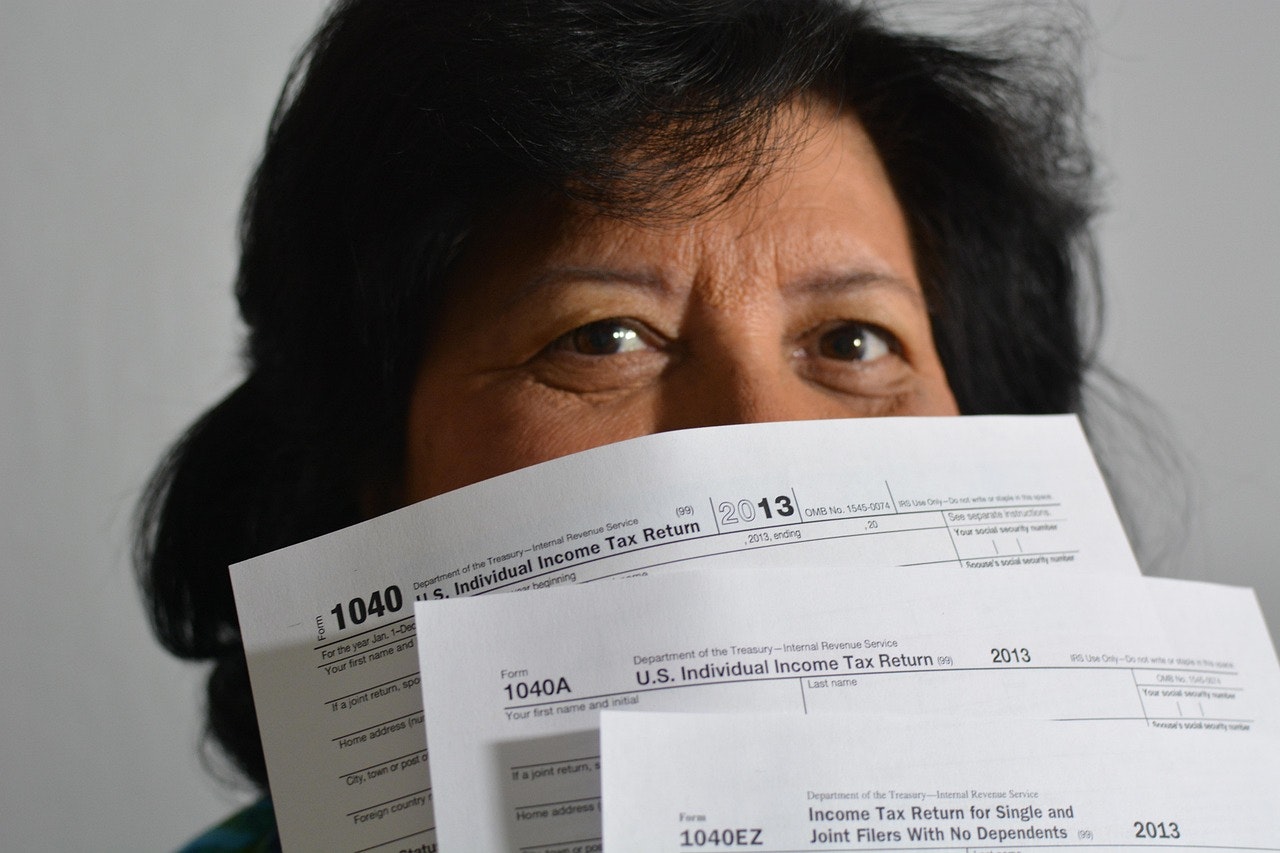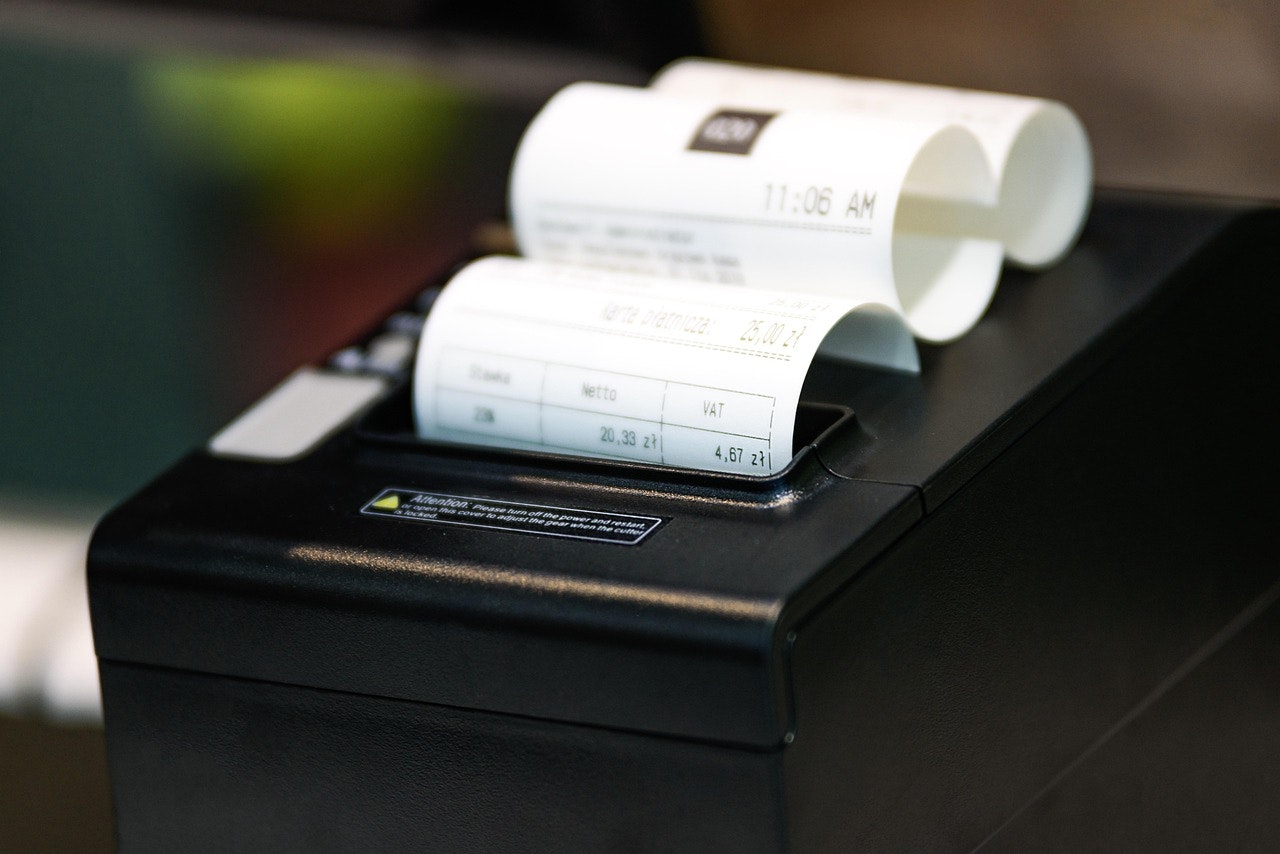The Complete Guide to 1031 Exchanges: Deferring Taxes While Building Wealth
Imagine selling a rental property for a $300,000 gain and paying zero in capital gains taxes—legally. That's the power of a 1031 exchange, one of the most valuable tools in real estate investing. Yet many investors either don't know about this strategy or are intimidated by its rules and timelines.
Named after Section 1031 of the Internal Revenue Code, this tax-deferral strategy has helped investors build substantial wealth by keeping their money working in real estate rather than sending it to the IRS. Whether you're selling your first rental property or managing a large portfolio, understanding 1031 exchanges can dramatically impact your long-term financial success.
The Purpose and Power of 1031 Exchanges
At its core, a 1031 exchange allows you to defer capital gains taxes when you sell an investment property by reinvesting the proceeds into another "like-kind" property. The theory behind this tax benefit is simple: if you're continuing your investment rather than cashing out, you haven't really "realized" your gain yet—you've simply moved it from one property to another.
What Makes This So Powerful?
Consider this example: You sell a rental property with a $200,000 gain. Without a 1031 exchange, you might pay:
- Federal capital gains tax (15-20%): $30,000-$40,000
- Net investment income tax (3.8%): $7,600
- State taxes (varies): potentially another $10,000-$20,000
- Depreciation recapture (25%): additional thousands
That's potentially $50,000 or more in taxes—money that could instead be reinvested in your next property. Through a 1031 exchange, you keep that entire amount working for you, effectively getting an interest-free loan from the government.
The "Like-Kind" Requirement
Don't let the term "like-kind" confuse you. In real estate, it's surprisingly broad: any real estate held for investment or business can be exchanged for any other real estate held for investment or business. The IRS doesn't care about the type, grade, or quality of the properties. For example, you can exchange:
- An apartment building for raw land
- A rental house for a commercial strip mall
- An office building for a rental vacation property (with restrictions)
- Even a farm for a parking lot
The key is that both properties must be held for investment or business use. You cannot exchange personal residences or property held primarily for sale (like fix-and-flips).
The Critical Timeline Rules: Your 45/180 Day Clock
The IRS gives you specific deadlines that cannot be extended—not even by one day. Missing these deadlines means losing the entire tax benefit, so understanding them is crucial.
Day 0: The Sale Closes
Your clock starts ticking the moment you close on the sale of your relinquished property (the property you're selling). This is not negotiable, and weekends and holidays count.
Day 45: Identification Deadline
Within 45 calendar days of selling, you must formally identify potential replacement properties. This identification must be:
- In writing
- Signed by you
- Delivered to your Qualified Intermediary (more on this below)
- Specific enough to be unambiguous (address, legal description, etc.)
Day 180: Purchase Deadline
You must close on your replacement property within 180 days of selling the original property (or by your tax return due date including extensions, whichever comes first). No exceptions, no extensions.
Pro tip: If your sale occurs late in the year, be careful about the tax return deadline. The rule is 180 days OR your tax return due date (including extensions), whichever is earlier. For example, if you sell on December 1, your 180 days would be May 30—but if your tax return is due April 15 and you haven't filed an extension, your deadline is actually April 15. Always file an extension if your 180-day period extends beyond April 15 to preserve your full exchange period.
The Qualified Intermediary: Your Essential Partner
Here's a critical rule that trips up many investors: You cannot touch the money from your sale —not even for a moment. This is where a Qualified Intermediary (QI) comes in.
When to Engage Your QI: Earlier Than You Think
Critical timing: You must have your QI in place BEFORE closing on your sale—ideally weeks in advance. Here's why:
Essential pre-closing requirements:
- The QI must be named as the seller in the closing documents (through an assignment agreement)
- Exchange agreements must be fully executed before closing
- Specific language must be added to your purchase and sale agreement
- Wire instructions must direct funds straight to the QI, never to you
The point of no return: If you close without a QI in place and receive the funds—even if held for just minutes—your exchange is dead. No exceptions.
Recommended timeline:
- When listing your property: Research and interview QIs
- When going under contract: Select and engage your QI
- At least 2 weeks before closing: Have all exchange documents signed
- Before closing: Ensure the title company has the QI's wire instructions
Many investors mistakenly think they can set up the exchange after closing or have funds briefly wired to them first. This kills the exchange instantly—the IRS calls this "constructive receipt," and there's no fixing it.
What Is a Qualified Intermediary?
A QI is an independent third party who:
- Holds your sales proceeds in escrow
- Prepares exchange documentation
- Ensures compliance with IRS regulations
- Transfers funds directly to purchase your replacement property
Who Cannot Be Your QI?
The IRS has strict rules about who cannot serve as your intermediary:
- You, your spouse, or linear family members
- Your attorney, accountant, or real estate agent (if they've served you in the past two years)
- Any business entities where you have more than 10% ownership
- Anyone who's been your employee in the past two years
Choosing a QI: What to Look For
Not all QIs are created equal. Look for:
- Experience: How many exchanges have they facilitated?
- Security: How are funds protected? Are they bonded and insured?
- Segregation: Are your funds held in separate accounts?
- Reputation: Check references and online reviews
- Availability: Can they answer questions throughout your exchange?
Warning: QIs are largely unregulated in many states. There have been cases of QIs going bankrupt or absconding with funds. Choose carefully and consider requiring segregated accounts with your name on them.
Identification Rules: Your Three Options
The 45-day identification period requires strategy. The IRS provides three rules for identifying replacement properties:
- The Three-Property Rule (Most Common)
You can identify up to three properties of any value. Most investors use this rule because of its simplicity. You're not required to purchase all three—they're simply your options.
Strategy tip: Identify three properties at different price points to give yourself flexibility. If your first choice falls through, you have backups.
- The 200% Rule
You can identify any number of properties as long as their combined fair market value doesn't exceed 200% of your relinquished property's sale price.
Example: If you sold for $500,000, you can identify unlimited properties totaling up to $1,000,000 in value.
- The 95% Rule (Rarely Used)
You can identify any number of properties of any value, BUT you must actually acquire 95% of the value of everything you identified. This is risky—if any deal falls through, you could blow the entire exchange.
What Happens If You Over-Identify?
If you violate your chosen identification rule, the IRS treats it as if you identified nothing. Your only option then is to purchase something you actually had under contract before the 45-day deadline—a narrow exception that rarely helps.
Delaware Statutory Trusts (DSTs): A Modern Alternative
For investors wanting to exit active property management while maintaining tax deferral, Delaware Statutory Trusts offer an compelling option.
What Is a DST?
A DST is a legally recognized entity that owns investment-grade real estate. When you buy into a DST, you're purchasing a fractional interest in the trust, which the IRS considers "like-kind" property for 1031 purposes.
Advantages of DSTs:
- No active management: Professional management handles everything
- Lower minimum investment: Often as low as $100,000
- Diversification: Spread investment across multiple properties or property types
- Institutional-quality properties: Access to large commercial properties typically unavailable to individual investors
- Pre-identified backup: Can serve as a backup identification if your primary exchange falls through
Disadvantages of DSTs:
- No control: You can't make management decisions
- Illiquid: Typically held for 5-10 years with no easy exit
- Fees: Management and syndication fees reduce returns
- Limited offerings: Must choose from available DSTs at time of exchange
- Accredited investor requirement: Most DSTs are only available to accredited investors (generally those with $1 million+ net worth excluding primary residence, or $200,000+ annual income for individuals/$300,000+ for couples)
DSTs as a Backup Strategy
Smart exchangers often identify a DST as their third property. If their primary targets falls through near the 180-day deadline, they can quickly close on the DST rather than face a failed exchange and massive tax bill.
Understanding Boot: When Cash or Debt Doesn't Match
"Boot" is any value received in the exchange that isn't like-kind property. Boot is taxable in the year received, potentially defeating the purpose of your exchange.
Cash Boot
Any cash you receive from the exchange is taxable. This includes:
- Proceeds not reinvested in replacement property
- Credits received at closing beyond those given at sale
- Earnest money returned after the 45-day identification period
- Non-exchange expenses paid from exchange funds
Critical point about closing expenses: Not all closing costs are created equal in a 1031 exchange. The IRS distinguishes between "exchange expenses" and "non-exchange expenses":
Exchange Expenses (OK to pay with exchange funds):
- Broker commissions
- Title insurance
- Escrow fees
- Exchange fees
- Recording fees
- Transfer taxes
Non-Exchange Expenses (create taxable boot if paid with exchange funds):
- Property taxes (prorations)
- Repair credits or bills
- Homeowner association dues
- Insurance premiums
- Rent prorations
- Security deposit transfers
- Loan fees and points on your new mortgage
Example: You sell for $600,000 but at closing, $5,000 of exchange funds goes toward prorated property taxes and $3,000 toward agreed-upon repairs. Even if you reinvest the remaining $592,000, that $8,000 is considered boot and immediately taxable. Many investors are shocked to receive a 1099 for money they never actually "received."
Strategy: Pay non-exchange expenses out of pocket rather than from exchange proceeds to avoid creating unexpected boot.
Mortgage Boot
This occurs when your debt on the replacement property is less than the debt on the relinquished property.
Example:
- Relinquished property: $600,000 sale price with $350,000 mortgage paid off (you receive $250,000 in proceeds)
- Replacement property: $550,000 purchase price with $300,000 new mortgage (you invest all $250,000 proceeds)
- Result: Even though you reinvested all cash proceeds, you have $50,000 in mortgage boot (taxable) because your debt decreased
This is a common trap—many investors think that reinvesting all their cash proceeds is enough, but the IRS also requires you to maintain equal or greater debt levels.
Avoiding Boot: Key Strategies
- Trade equal or up: Purchase replacement property of equal or greater value
- Replace debt: Maintain equal or greater debt on replacement property
- Add cash: If taking on less debt, add cash to make up the difference
- Buy multiple properties: Combine properties to reach needed value
Strategic Cash Access Without Creating Boot
Many investors need access to cash from their real estate but still want to defer taxes through a 1031 exchange. Here's how to do it properly—and pitfalls to avoid:
Refinancing After the Exchange (Safest Option)
Once your 1031 exchange is complete and you own the replacement property, you're generally free to refinance and pull cash out. The IRS doesn't consider post-exchange borrowing as boot because the exchange is already complete.
Timing flexibility: Many QIs accept refinancing immediately after the exchange closes—even the same or next day—as long as the exchange completes independently first and the refinance is a separate transaction. The key is that the exchange must be genuinely complete before the refinance occurs, with no contractual obligation to refinance as part of the exchange. While some conservative advisors suggest waiting 6-12 months, this isn't a legal requirement if the transactions are truly independent.
Refinancing Before the Sale (Proceed with Caution)
You can refinance your property before selling it and keep the cash proceeds tax-free. However, timing and intent matter significantly:
Safe approach:
- Refinance at least 6-12 months before listing the property
- Use the funds for legitimate business purposes
- Document that the refinance wasn't done in anticipation of the exchange
Red flags to avoid:
- Refinancing immediately before listing or selling
- Maxing out the property's value right before an exchange
- Any documentation suggesting the refinance is connected to the planned sale
The IRS could view a refinance immediately before sale as an attempt to "cash out" the property's equity tax-free, potentially treating it as boot or even disqualifying the exchange entirely. The key is showing the refinance had an independent business purpose.
The "Napkin Deal" Cash Strategy
Some sophisticated investors negotiate to receive cash outside the exchange structure:
- Sell Property A for $1 million in a 1031 exchange
- Separately, sell Property B (not in an exchange) for cash
- Buy replacement property for Property A only
This keeps the exchange clean while accessing liquidity from other assets.
Investment Intent and Holding Periods
One of the most common questions about 1031 exchanges: "How long do I have to hold the property?"
No Magic Number, But Intent Matters
The IRS has never specified a minimum holding period for 1031 exchanges. There's no bright-line test saying "hold for X years and you're safe." Instead, they look at your intent—did you acquire and hold the property for investment or business purposes?
Safe Harbor Guidelines
While not official rules, tax professionals generally consider these timeframes:
Very Safe: 2+ years of holding and renting
- Clear demonstration of investment intent
- Unlikely to face IRS challenge
Generally Safe: 1-2 years
- Most tax advisors comfortable with this timeframe
- Should have evidence of trying to rent/lease the property
- Actual rental income strengthens the position
Potentially Risky: Less than 1 year
- May still qualify if you can prove investment intent
- Document all efforts to rent the property
- Business changes or unforeseen circumstances can help justify shorter holds
Red Flags:
- Never attempting to rent the property
- Immediately listing for sale after acquisition
- Pattern of quick flips using 1031 exchanges
Proving Investment Intent
Document everything that shows you held for investment:
- Rental listings and advertising
- Lease agreements (even month-to-month)
- Repairs and improvements for rental purposes
- Property management agreements
- Insurance policies showing rental property coverage
When Shorter Holds May Be Acceptable
Sometimes legitimate circumstances force an earlier sale:
- Receiving an unsolicited "offer you can't refuse" when the property wasn't even listed
- Job relocation requiring immediate liquidation
- Health issues necessitating different investments
- Dramatic market changes making holding impractical
- Unexpected opportunity requiring capital
The key is showing you originally intended to hold for investment, even if circumstances changed. An unsolicited offer at a price too good to pass up is particularly defensible—you weren't trying to flip the property; the opportunity came to you.
Advanced Strategies and Considerations
Reverse Exchanges
Sometimes you find the perfect replacement property before selling your current one. A reverse exchange allows you to acquire the replacement property first, then sell the relinquished property within 180 days. These are more complex and expensive but can be valuable in competitive markets.
The financing challenge: The biggest hurdle in reverse exchanges is financing. Consider these complications:
- Banks won't lend on both properties: Most lenders won't give you a mortgage on the new property while you still own and have a mortgage on the old one—they see too much debt exposure
- The QI can't get a loan: The Exchange Accommodation Titleholder (EAT) that temporarily holds title can't qualify for traditional financing
- Cash requirement: You typically need cash to purchase the replacement property, either your own funds or hard money lending at higher rates
- Double carrying costs: You're paying taxes, insurance, maintenance, and possibly mortgages on both properties during the exchange period
- Parking arrangement costs: Reverse exchanges cost $5,000-$15,000+ versus $1,000-$2,000 for forward exchanges
When reverse exchanges make sense despite the challenges:
- You have substantial cash reserves or access to private lending
- The replacement property is an exceptional opportunity that won't wait
- You're in a declining market and want to lock in the replacement property price
- You can sell your relinquished property quickly (already have a buyer interested)
Most investors who think they need a reverse exchange can instead negotiate a longer closing period on their purchase or make their purchase contract contingent on selling their current property.
Improvement Exchanges
Also called "build-to-suit" exchanges, these allow you to use exchange funds to improve a replacement property. The improvements must be completed within the 180-day window, adding complexity but enabling customization.
Partial Exchanges
You don't have to exchange the entire proceeds. You might deliberately take some boot to:
- Pay off personal debt
- Diversify into other investments
- Cover living expenses
- Take advantage of lower tax rates in certain years
The Napkin Deal Strategy
Some investors include a "1031 exchange cooperation clause" in their purchase contracts, requiring the seller to cooperate with exchange documentation at no additional cost. This protects your ability to do a future exchange.
Additional 1031 Exchange Considerations
Partnership Interests and the "Drop and Swap" Strategy
Partnership and LLC interests don't qualify for 1031 exchanges—you need to own real property directly. Additionally, a 1031 exchange must generally be reported under the same tax ID, meaning if a partnership does an exchange, all partners are bound by that decision. However, the "drop and swap" strategy solves the common problem where some partners want to cash out while others want to defer taxes through a 1031 exchange.
How it works:
- Before selling, the partnership distributes individual deeds to each partner
- Partners then own the property as tenants-in-common, each with their own tax ID
- Each partner can now independently choose to do their own 1031 exchange or take cash
- This flexibility is particularly valuable when partners have different tax situations or investment goals
Timing considerations: The timing of a drop and swap is a matter of risk tolerance. Many QIs and tax professionals accept simultaneous or near-simultaneous drop and swaps, while more conservative advisors recommend holding the deeded property for a period before selling. The IRS hasn't provided clear guidance on required holding periods, so it comes down to your comfort level with risk. Document the business purpose for the drop and ensure all formalities of the tenancy-in-common ownership are properly observed.
Foreign Property Restrictions
Since the 2017 Tax Cuts and Jobs Act, 1031 exchanges are limited to U.S. property only:
- Cannot exchange U.S. property for foreign property
- Cannot exchange foreign property for U.S. property
- U.S. territories (Puerto Rico, USVI, Guam) generally qualify as U.S. property
This change trapped many investors who owned foreign property expecting to exchange it—always verify current rules before planning international real estate strategies.
Mixed-Use and Vacation Rental Properties
Properties with both personal and business use require careful allocation:
Vacation Rentals - The 14-Day/10% Rule:
- Personal use cannot exceed greater of 14 days or 10% of rental days
- Exceeding this threshold may disqualify portions from exchange treatment
- Keep meticulous records of all personal vs. rental use
Mixed-Use Allocation:
- Must allocate between qualifying (business/investment) and non-qualifying (personal) use
- Only the business portion qualifies for 1031 treatment
- Example: A property used 70% for business and 30% personally—only 70% of gain can be deferred
Tenant-in-Common (TIC) Structures
TICs offer another fractional ownership option alongside DSTs:
TIC Advantages:
- Maintain some management control (unlike DSTs)
- Can be structured for smaller groups of investors
- Each owner can independently decide to 1031 exchange
TIC Disadvantages:
- Requires unanimous consent for major decisions
- More complex management than single ownership
- Potential financing challenges
TICs work well for small groups of investors who want to pool resources while maintaining future exchange flexibility.
Cost Segregation Complications
If you've done cost segregation studies to accelerate depreciation, be aware:
- Personal property (5, 7, 15-year property) identified in cost segregation doesn't qualify for like-kind exchange
- Only real property (27.5 or 39-year) qualifies post-2017
- May create unexpected boot if personal property was separated out
- Consider this before doing cost segregation on properties you might exchange
Oil, Gas, and Mineral Rights
These can be exchanged but follow special rules:
- Mineral rights for mineral rights qualify
- Surface rights for surface rights qualify
- Can't exchange surface rights for mineral rights
- Working interests can be exchanged for royalty interests
- Each state may treat these differently for state tax purposes
Multiple Property Exchanges
You're not limited to one-for-one exchanges:
Consolidation: Exchange multiple properties for one larger property
- Simplifies management
- Must meet value requirements for all relinquished properties combined
Critical timing trap: When selling multiple properties, your 180-day clock starts with the FIRST sale, not each individual sale. All properties must close within that same 180-day window. If you sell Property A on January 1 and Property B doesn't close until June 15, you only have 15 days left (until June 29) to close on ALL replacement properties. This compressed timeline makes finding and closing on suitable replacements nearly impossible. Plan your closings carefully to ensure all sales occur early in the exchange period.
Diversification: Exchange one property for multiple properties
- Spreads risk across markets or property types
- Can mix property types (residential, commercial, land)
- More complex closings and timing coordination
Basis Allocation: When acquiring multiple properties, you must allocate your basis based on relative fair market values—important for future depreciation and sales.
Related Party Exchanges
Exchanges between related parties have special restrictions:
Who's considered related:
- Family members (spouse, children, parents, siblings)
- Entities where you own more than 50%
- Your business partners in certain situations
The Two-Year Rule: Both parties must hold their exchanged properties for at least two years after the exchange, or the tax deferral is recaptured.
Exceptions to the holding requirement:
- Death of either party
- Involuntary conversion (fire, condemnation)
- Can prove tax avoidance wasn't a principal purpose
Red Flag: Serial exchanges among family members to cash out properties—IRS scrutinizes these heavily.
Common Pitfalls to Avoid
- Missing Deadlines
- Set calendar reminders at days 30, 40, and 170
- Don't rely on others to track your deadlines
- Remember: No extensions, ever
- Constructive Receipt
- Never have access to sale proceeds, even momentarily
- Don't let funds hit your bank account
- Ensure your QI is set up before closing
- Related Party Transactions
Exchanging with family members or controlled entities requires holding the property for at least two years after the exchange, with additional restrictions.
- Dealer Property
Properties you flip rather than hold for investment don't qualify. The IRS looks at intent—holding for at least a year helps establish investment intent.
- Personal Use
Using the property personally (like vacationing in your rental) can disqualify it. Follow strict rental guidelines if dealing with vacation properties.
State Tax Considerations
While federal tax treatment is consistent, state handling varies:
- California: Follows federal rules but watch for potential "clawback" if you leave the state
- Pennsylvania: Doesn't recognize 1031 exchanges for state taxes
- Multiple states: If exchanging across state lines, consult professionals in both states
Some investors strategically exchange from high-tax states to low-tax states before an eventual taxable sale.
Planning Your Exit Strategy
Remember, 1031 exchanges defer taxes—they don't eliminate them. However, several strategies can minimize or eliminate the eventual tax:
"Swap Till You Drop" - Step-Up in Basis at Death
The ultimate 1031 strategy has its own catchphrase in the real estate world: "swap till you drop." If you hold the property until death, your heirs receive a "stepped-up basis" to current market value, potentially eliminating all deferred gains from years or decades of exchanges. This makes 1031 exchanges a powerful estate planning tool—you get the benefit of tax deferral during your lifetime, and your heirs inherit the property as if they paid full market value, wiping out all that deferred tax liability.
Charitable Contributions
Donating appreciated property to charity can eliminate the deferred tax while providing significant tax benefits. When you donate investment property to a qualified charity—including contributions to a donor-advised fund (DAF)—you generally get to deduct the full fair market value of the property, not just your original basis. This means you avoid paying tax on all those deferred gains AND get a charitable deduction for the entire current value.
With a donor-advised fund, you get the immediate tax deduction but can take your time deciding which specific charities to support later. This strategy is particularly powerful for investors who want the tax benefit now but haven't decided on their charitable giving strategy. It's a win-win for charitably inclined investors.
Installment Sales
After holding for investment purposes, you might sell with owner financing, spreading the gain (and taxes) over multiple years.
Convert to Primary Residence
After holding as a rental for an adequate time (tax professionals generally recommend at least 1-2 years to clearly establish investment intent), you might convert to a primary residence. After living there for two of five years, you could potentially exclude up to $250,000 (single) or $500,000 (married) of gain under the Section 121 exclusion.
However, there's an important catch for properties acquired through 1031 exchanges: any depreciation taken after May 6, 1997, is still taxable as depreciation recapture (at 25%), and the portion of gain attributable to periods of non-qualified use (rental periods after 2008) may not be eligible for the full exclusion. The rules are complex, but the strategy can still provide substantial tax savings with proper planning.
Is a 1031 Exchange Right for You?
Consider a 1031 exchange if you:
- Plan to continue investing in real estate
- Want to defer substantial capital gains
- Can handle the strict timelines
- Have sufficient gain to justify the costs (typically $30,000+ in tax savings)
Skip the exchange if you:
- Need the cash for non-real estate purposes
- Are in a low tax bracket this year
- Can't find suitable replacement properties
- Want to simplify rather than continue managing property
Take Action: Your Next Steps
The key to a successful 1031 exchange is preparation. Start planning before you list your property for sale:
- Interview Qualified Intermediaries before you need one
- Research replacement properties in advance
- Understand your tax situation and potential savings
- Assemble your team: CPA, attorney, real estate agent familiar with exchanges
- Create backup plans in case your first choice falls through
Let Desert Rose Tax & Accounting Guide Your Exchange
A 1031 exchange can save you tens or hundreds of thousands in taxes, but the rules are unforgiving. One mistake can cost you the entire tax benefit. At Desert Rose Tax & Accounting, we've guided numerous clients through successful exchanges, helping them build wealth while minimizing taxes.
We'll help you:
- Calculate your potential tax savings
- Coordinate with qualified intermediaries
- Ensure compliance with all IRS requirements
- Plan for eventual exit strategies
- Integrate exchanges into your overall wealth management plan
Don't let capital gains taxes erode your real estate wealth. Visit www.desertrosetax.com to schedule a consultation and discover how a 1031 exchange can accelerate your investment goals.
Edward Ethington, CPA, CFP®, MBA
Desert Rose Tax & Accounting
Your Partner in Strategic Tax Planning
www.desertrosetax.com
This blog provides general information about 1031 exchanges and should not be construed as specific tax advice. Tax laws are complex and frequently change. The success of a 1031 exchange depends on your specific circumstances. Please consult with qualified tax and legal professionals at Desert Rose Tax & Accounting before proceeding with any exchange transaction.















